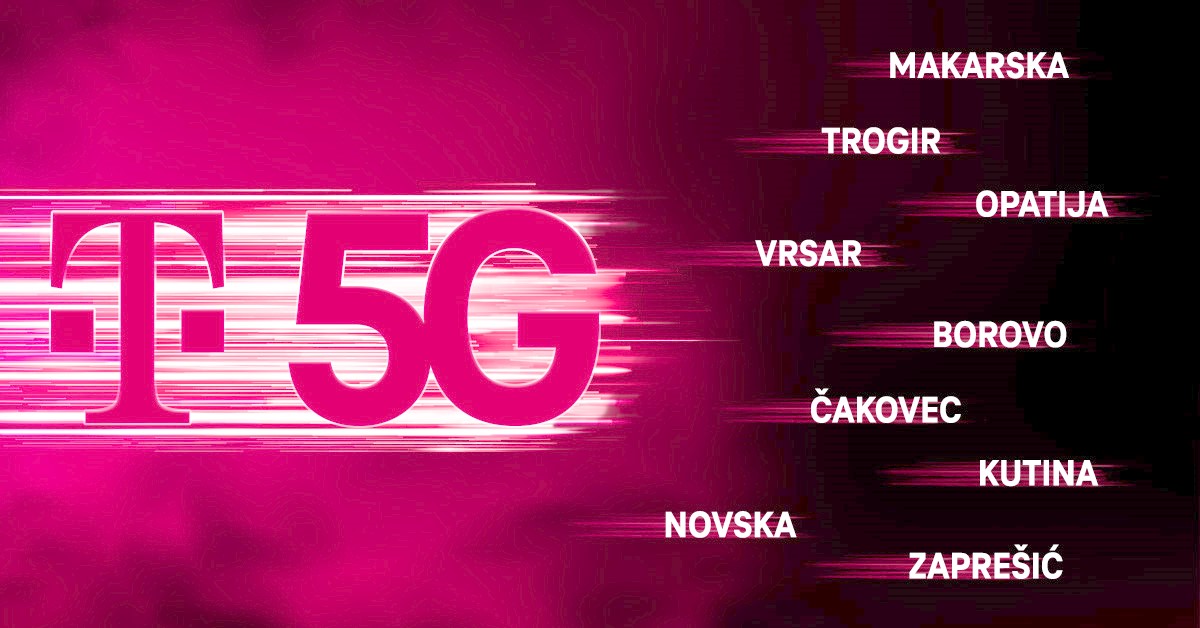9.3.2021
- As of today, the 5G network is also commercially available in Čakovec, Kutina, Makarska, Novska, Opatija, Trogir, Zaprešić, Borovo, and Vrsar
- 1.3 million citizens in 24 Croatian cities and towns covered by 5G signal
- Health, agriculture, energy, education, manufacturing, transport, and the public sector are just some of the areas that 5G will significantly improve
Hrvatski Telekom’s 5G network available in 24 cities and towns

Hrvatski Telekom continued with the introduction of a commercial 5G network throughout Croatia. As of today, the 5G network is available in Čakovec, Kutina, Makarska, Novska, Opatija, Trogir, Zaprešić, Borovo, and Vrsar as well. The commercial 5G network now covers 24 Croatian cities and towns and 1.3 million inhabitants of Croatia.
5G technology allows three basic things: faster and better Internet access, speedier network response, and significantly better connectivity of many devices, which is a prerequisite for developing smart industries, modern cities, and the society of the future.
“From the technological point of view, 2020 was the year of the emergence of the 5G network in Croatia. With the first commercial network introduction, we laid the foundations for a new level of economic and social digitalization. In 2021, we are equally ambitious and committed. We have enabled 5G in 24 cities and towns in four months, covering 1.3 million inhabitants. We will not stop at this because modern telecommunication networks - 5G and fiber-optics are necessary for a successful future“, said Boris Drilo, Member of the Management Board and Chief Technology and Chief Information Officer of Hrvatski Telekom.
Hrvatski Telekom offers all its customers in specific tariffs until June 30, 2021, with no extra charge, the possibility of using the 5G network. For this, they need to be in the area covered by 5G network and have a 5G compatible device. More details are here.
Hrvatski Telekom’s 5G network currently operates on Dynamic Spectrum Sharing (DSS) technology, which allows the use of existing frequencies for 5G and rapid implementation of the 5G network. It reduces the need for new base stations and locations on specific 5G frequencies. In March this year, Hrvatski Telekom was the first to start involving commercial users in tests on the 3.5 GHz frequency band.